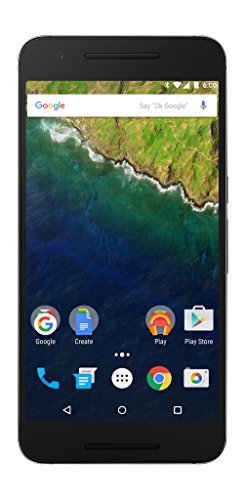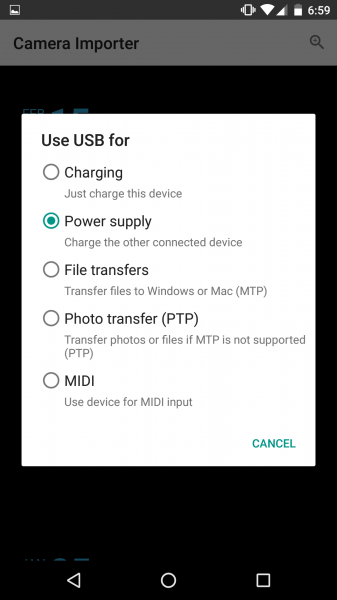Android Marshmallow has several neat features to manage all the new things you can do with the new USB Type-C interface on Android phones like the LG Google Nexus 5X and the Huawei Google Nexus 6P.
The most important thing to manage is what to do when you plug something into the USB Type-C port. You'll first need to go to Android's notifications by dragging your finger from the top of the screen. Select the USB for charging notification.
If you are connected to a USB Type-C power supply or another USB Type-C device that can provide power, you will typically see Use USB for Charging as the default selection. With this selection, your Android phone will simply charge.

Now if you are connected to a device that can consume power, you can select Use USB for Power supply to have your Android phone charge that device.

If you connect to a Mac or PC and you have Android File Transfer, you will want to select Use USB for File transfers. If instead you want to use a photo program like Apple Photos and have your Android phone show up as a camera so you can just import the photos, select Use USB for Photo transfer (PTP).
On the other hand, if you want to transfer files and photos into your Android phone, you don't need to select any of these options. For example, here I've connected a Google Pixel C to the LG Google Nexus 5X. If I want to transfer files from the Google Pixel C, on the Google Pixel C I need to select Use USB for File transfers. Back on the Nexus 5X, I need to go to Settings->Storage & USB->Internal Storage->Explore to open up the Android file manager.


If you scroll down, you will see the Pixel C show up as another folder, and you can then see all the files accessible on the Pixel C.

Alternatively, on the Pixel C you can select Use USB for Photo transfer (PTP). On the Nexus 5X, you can then open up the Camera Importer which will then see the Pixel C as a camera. Unfortunately, the Camera Importer App wasn't able to preview any of the image thumbnails making picture selection impossible. The best choice was to select all the images and then select import.



If you are curious what USB speeds you have on your Android phone, the easiest thing to do is to go to Google Play and download the USB Device info App.


Once you open the App, the Device Info shows that the xHCI USB Host controller in the Nexus has USB 3.1 Gen 1 (5 Gb/s) capability, but only USB 2.0 (480 Mb/s) speeds is enabled with the USB Type-C connector.


If you connect a USB SuperSpeed drive to the Nexus like the SanDisk Ultra Dual USB Drive 3.0 using a Belkin USB-C to USB-A Adapter, you can see that the SanDisk drive only connects at 480 Mb/s speeds.


 GTrusted
GTrusted




























